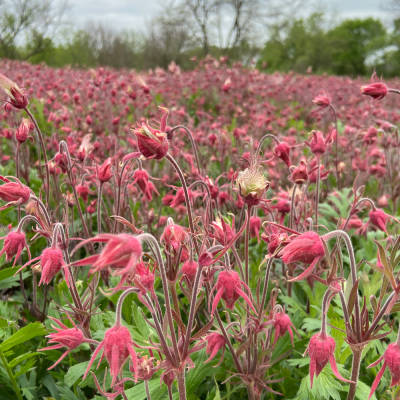Time for the Spring Ephemerals
By Carol Becker
Early spring is a very special time in the garden for me. As soon as the snow melts and the ground begins to warm up, I know I can look forward to seeing the very first native plants that emerge from the damp soil by the front stone garden walkway. These are the ephemerals, so named because they emerge, bloom, and die back very quickly, before there is much else going on in the native plant garden. I wish they would last longer – but it is their nature to appear only briefly.
The word ephemeral literally means “lasting only a short time.” In nature these tiny native plants appear typically in the woods or fields, in early spring when moisture and sun are abundant because the overhead trees are bare. By the time the tree canopy is leafed out and shade covers the ground below, the ephemerals are already gone. They live on underground until the next spring when they will bloom again. Their above-ground life cycle: leafing out, blooming, seeding and dying back, is already complete, or persists only as remnant foliage.

It is typical of some ephemeral natives to blossom before leafing out. In this, they seem to present us with their best first. Each has a unique and delicate blossom shape and color that is both fragile and beautiful. I always think I love them best for these tiny spring blossoms, but then the foliage comes and I am surprised again! The beauty of the whole plant seems to expand as each shows me its total look.
I have had many happy hours in the woods of Wisconsin and Illinois, hunting for my favorite ephemeral plants so that I could learn what they look like in nature. In April, I cannot wait to get to the Pasque Flower meadow I have discovered, where I can see a whole field of the delicate blossoms emerging as they do close to the ground in the midst of the early grasses. This is one spring ephemeral that blooms in fields as well as woodland! Accompanying them, I can count on seeing the pink buds and blossoms of Prairie Smoke, so named because its blossom doesn’t look like a flower at all, but a delicate wisp of smoke. Later in the spring, in the same woodland but farther along under the oak grove, I can count on finding thousands of Dutchman’s Breeches blooming just in the place where they can catch the brief spring sunlight on the open hillside. Standing up I can see only tiny dots of white, but bending down, I am treated with a close-up look at the unique blossoms that look like tiny trousers, sporting their flair among the open almost ferny foliage that cradles them.

We have many native ephemerals to consider, but they will look different in our gardens than they do in nature. I like to use ephemerals in my designs by walkways or doorways, where observant people are most likely to see them. In my own garden, the front bed walkways are lined with shooting star, Dutchman’s Breeches, Hepatica, Trillium, Bloodroot, and others. In my back woodland garden, I have planted Spring Beauty, Birds foot Violet, and Merrybells. In and around the taller summer-blooming plants in my butterfly garden, I have planted Prairie Smoke for early spring color.
I have also used ephemeral natives as spring groundcover. Under a grove of viburnum that will not bloom until later in the spring, I once planted a few Virginia Bluebells, and now, every spring the whole bed is filled with the lovely blue blossoms of this prolific spreader. In another shadier area of the back garden, I planted Mayapple as a groundcover. This one persists longer than many other ephemeral natives and produces a bitter little apple in early summer from a single while blossom that appears under its umbrella-like leaf in spring, before the plant itself dies back, the squirrels love it!

Every one of these unique plants is a conversation starter in the native garden, even if they only last a short time. I love working with them, and I cherish their delicate beauty each and every year.
Here are the Latin names of each of these ephemerals: pasque flower (Pulsatilla vulgaris), Prairie Smoke (Geum triflorum), bird’s foot violet (Viola pedata), bloodroot (Sanguinaria canadensis), Virginia bluebells (Mertensia virginica), Mayapple (Podophyllum peltatum), Dutchman’s breeches (Dicentra cucullaria), Trillium (Trillium grandiflorum), Hepatica (Hepatica nobilis).
Back To Blog
